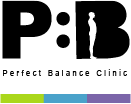Our Strength and Conditioning Coach Phil Doyle has put together some exercises which can help you strengthen your calves.
A calf muscle tear is one of the most common injuries in sports. Sometimes, the condition will be referred to as calf muscle pulling, in an effort to describe the process in which injuries to the calf muscle takes place.
Usually, the condition involves the calf muscle being stretched forcibly beyond its normal limits, and the tissues in the muscle eventually become torn. Such a tear on a calf muscle is called a calf strain.
Depending on how severe the muscle tear is, it is categorised into three degrees of muscle strain. A Calf Rehab Advice Sheet will help you with these issues.
Here is a Calf Rehab Advice Sheet
Calf Foam Roll
Place a foam roller on the floor and sit on the floor supporting yourself with your hands. Place the back of your calf over the foam roller. Roll the entire back of your calf from your knee to your ankle in an up and down motion with toes pointed up. Maintain your abs tight and proper low back posture during the exercise.
Plantar Fascia Stretch
Stand with the ball of your foot on a step, with the rest of your foot over the edge. Lower your heel down until a stretch is felt in the arch of your foot.
Eccentric Calf Raise
Stand with the ball of your foot on a step, with the rest of your foot over the edge. Use both feet to stand on tiptoes and slowly lower yourself down so the heel reaches parallel to the floor then repeat.
Calf Double Leg Raise
Stand with the ball of your foot on a step, with the rest of your foot over the edge. Lower your heel down as far as possible then raise yourself up on tiptoes as high as possible and repeat.
For more information about Calf Rehab Advice
If you would like additional information about calf rehab or to discuss how we may be able to help with calf issues, please contact us using the form below and we will get back to you as soon as possible.











